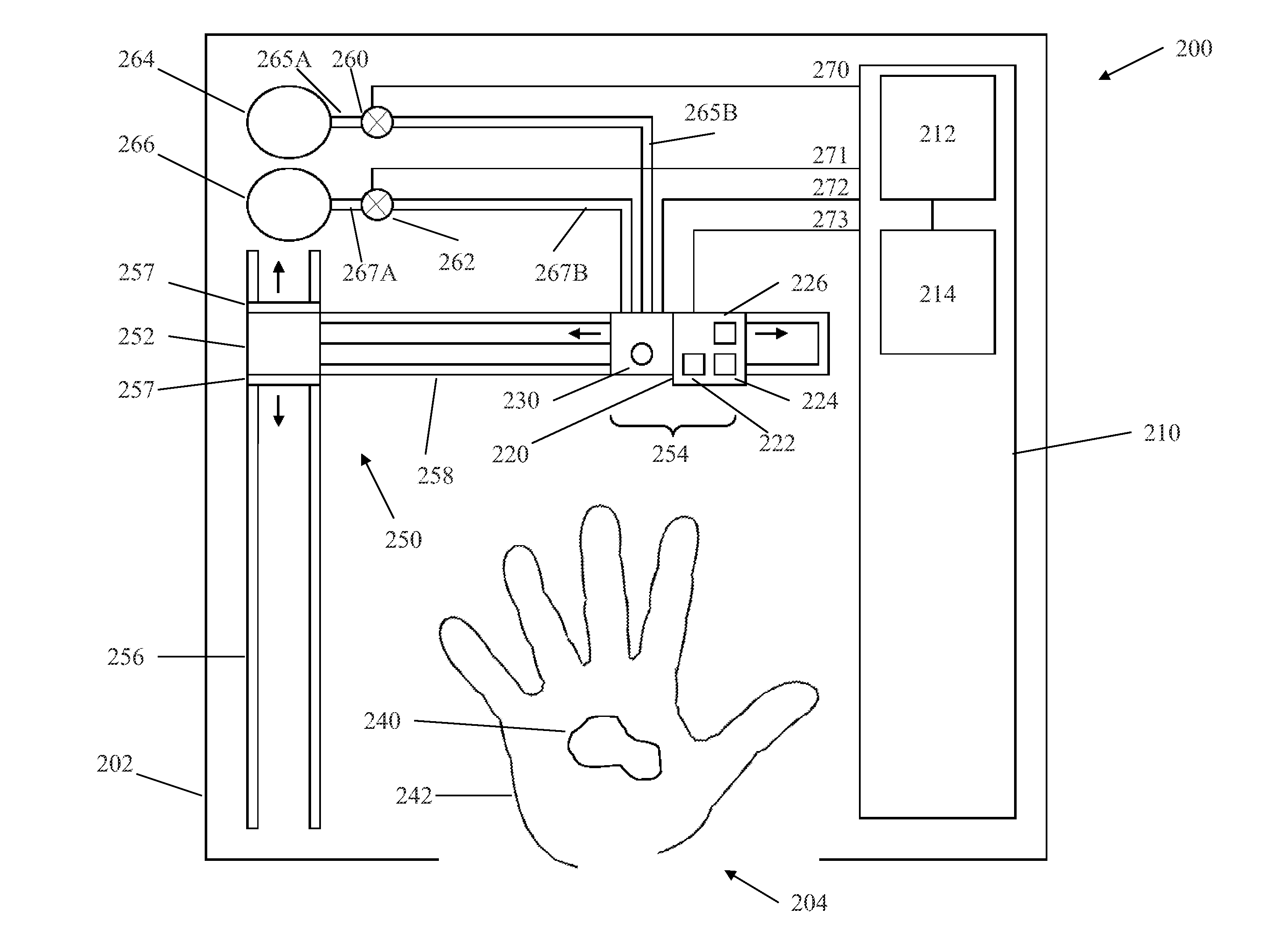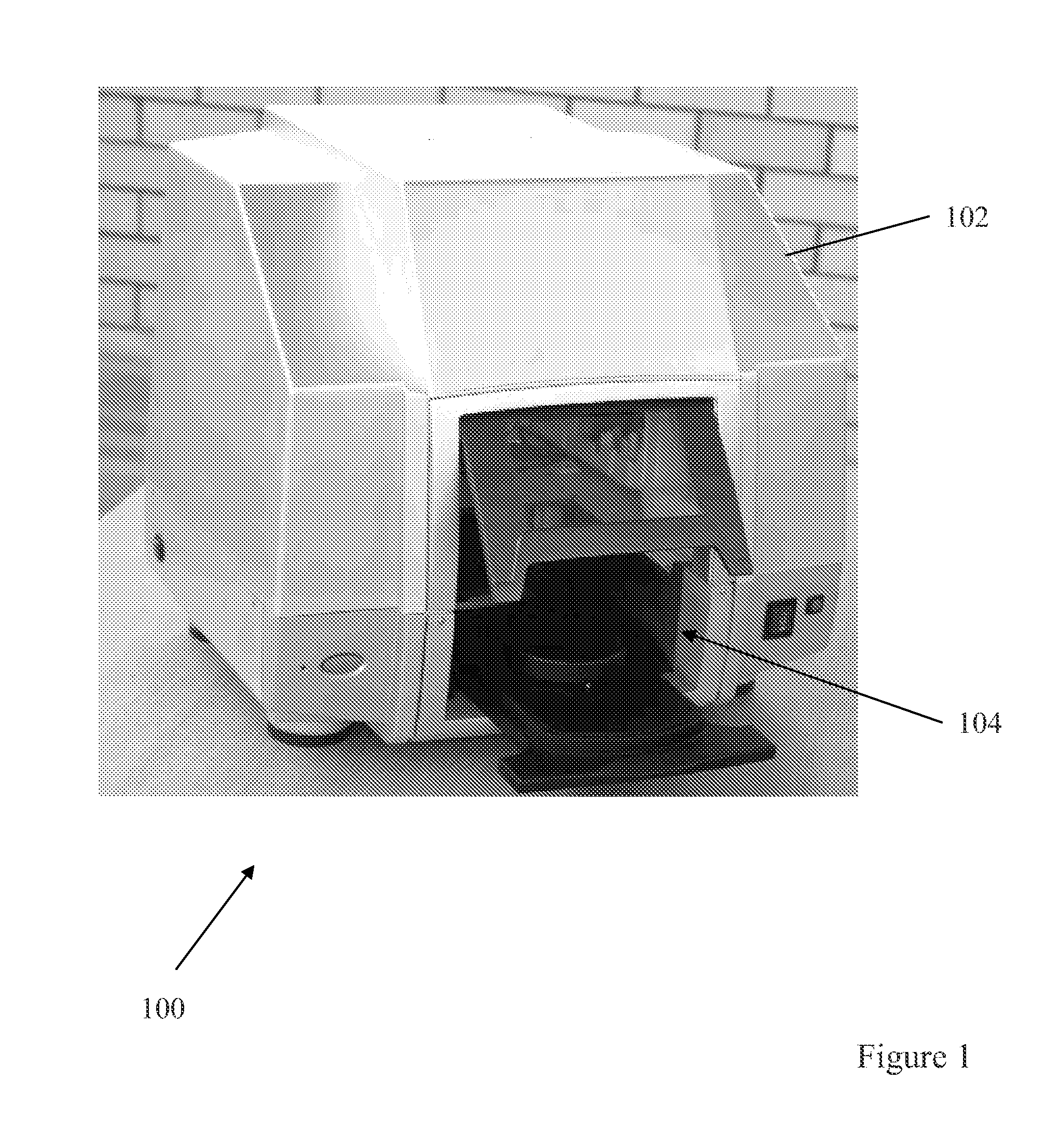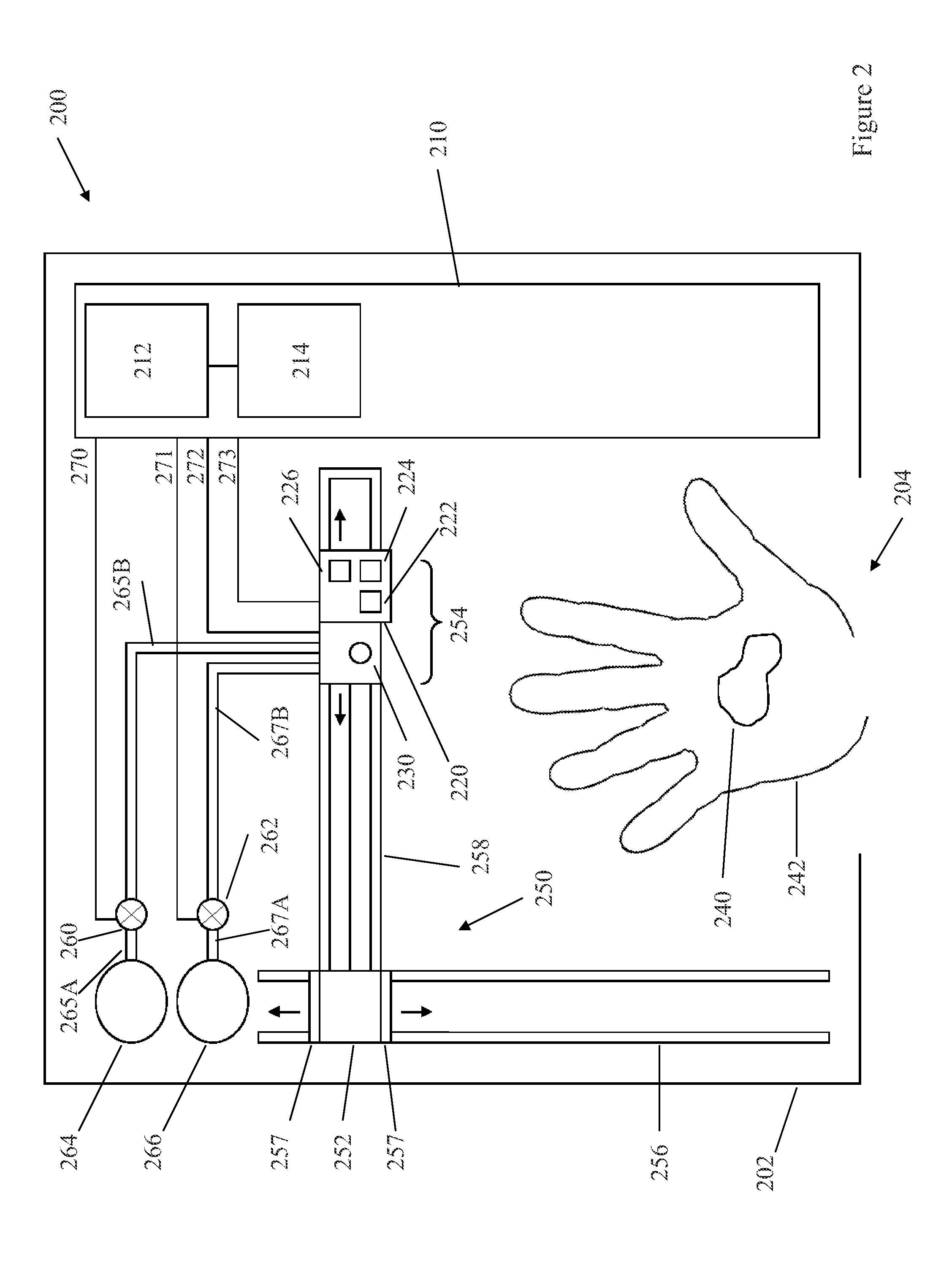Automated Cryogenic Skin Treatment
a skin treatment and cryogenic technology, applied in the field of skin treatment technologies, can solve the problems of hyperpigmentation, radiation treatment can be painful for patients, treatment is not precisely targeted to only treat hair follicles, etc., and achieve the effect of reducing the number of pulses
- Summary
- Abstract
- Description
- Claims
- Application Information
AI Technical Summary
Benefits of technology
Problems solved by technology
Method used
Image
Examples
Embodiment Construction
[0046]The following description discusses inventive concepts with respect to treating a patient's right or left hand. One should appreciate that the techniques can be equally applied to other areas of a patient's skin. In addition, the techniques described herein could be applied to animals, plants and so forth.
[0047]Overview
[0048]The apparatus discussed herein utilize one or more cryogenic fluids to treat a lesion on a patient's skin. Though preferred cryogenic fluids are cold at standard pressure, it is also contemplated that the cryogenic fluid could alternatively be cooled or heated as needed prior to being dispensed through the nozzle. Additionally, or alternatively, the cryogenic fluids could be cooled through expansion after exiting a nozzle, as is consistent with reduction of pressure of a gas. In some embodiments the fluid can be recaptured or recycled.
[0049]The rate at which the pressure of the fluid impinging on the skin rises can be controlled by appropriate pulsing of a...
PUM
 Login to View More
Login to View More Abstract
Description
Claims
Application Information
 Login to View More
Login to View More - R&D
- Intellectual Property
- Life Sciences
- Materials
- Tech Scout
- Unparalleled Data Quality
- Higher Quality Content
- 60% Fewer Hallucinations
Browse by: Latest US Patents, China's latest patents, Technical Efficacy Thesaurus, Application Domain, Technology Topic, Popular Technical Reports.
© 2025 PatSnap. All rights reserved.Legal|Privacy policy|Modern Slavery Act Transparency Statement|Sitemap|About US| Contact US: help@patsnap.com



